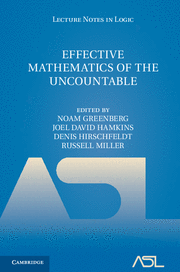[bibtex key=”GitmanHamkinsJohnstone2016:WhatIsTheTheoryZFC-Powerset?”]
This is joint work with Victoria Gitman and Thomas Johnstone.
We show that the theory ZFC-, consisting of the usual axioms of ZFC but with the power set axiom removed-specifically axiomatized by extensionality, foundation, pairing, union, infinity, separation, replacement and the assertion that every set can be well-ordered-is weaker than commonly supposed and is inadequate to establish several basic facts often desired in its context. For example, there are models of ZFC- in which $\omega_1$ is singular, in which every set of reals is countable, yet $\omega_1$ exists, in which there are sets of reals of every size $\aleph_n$, but none of size $\aleph_\omega$, and therefore, in which the collection axiom sceme fails; there are models of ZFC- for which the Los theorem fails, even when the ultrapower is well-founded and the measure exists inside the model; there are models of ZFC- for which the Gaifman theorem fails, in that there is an embedding $j:M\to N$ of ZFC- models that is $\Sigma_1$-elementary and cofinal, but not elementary; there are elementary embeddings $j:M\to N$ of ZFC- models whose cofinal restriction $j:M\to \bigcup j“M$ is not elementary. Moreover, the collection of formulas that are provably equivalent in ZFC- to a $\Sigma_1$-formula or a $\Pi_1$-formula is not closed under bounded quantification. Nevertheless, these deficits of ZFC- are completely repaired by strengthening it to the theory $\text{ZFC}^-$, obtained by using collection rather than replacement in the axiomatization above. These results extend prior work of Zarach.

